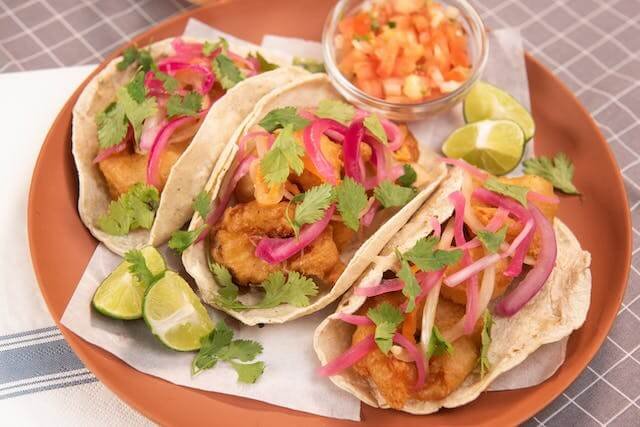Table of Contents
ToggleMexican Food For Personal Chefs
As personal chefs, our culinary journey takes us around the globe, exploring different cuisines and flavors. Today, we are venturing into the heart of North America to explore the vibrant and diverse world of Mexican cuisine. With its rich history, bold flavors, and vibrant colors, Mexican cuisine has captured the hearts and taste buds of food lovers around the world.
So what makes Mexican cuisine so special? It all starts with the ingredients. From juicy avocados to fiery chilies, Mexican dishes are bursting with fresh produce that add depth and complexity to each bite. And when it comes to meat, there is no shortage of options – from succulent slow-cooked barbacoa to spicy chorizo sausage.
Key Ingredients in Mexican Cuisine
Mexican cuisine is characterized by its use of fresh, local ingredients that reflect the country’s varied geography and climate. Some of the key ingredients include chili peppers, corn, tortillas, beans, avocado, limes, herbs, tomatoes, cumin, cayenne, black pepper, squash, rice, and cilantro. These ingredients are used to create a variety of delicious and flavorful dishes that are loved by people all over the world.
Chili peppers, also known as chilies or chillies, are an essential ingredient in Mexican cuisine. They come in a variety of sizes, shapes, colors, and levels of spiciness. Some popular varieties include jalapeno, serrano, poblano, and habanero peppers. These peppers add heat and depth of flavor to many traditional Mexican dishes such as salsas, stews, and sauces.
Corn is another staple ingredient in Mexican cooking. It has been cultivated in Mexico for thousands of years and is used in a wide range of dishes such as tortillas, tamales, cornbread, and soups. Corn adds a subtle sweetness and texture to these dishes, making them even more satisfying.
Beans, specifically black beans and pinto beans, are also commonly used in Mexican cuisine. They are protein-rich and add a hearty and earthy flavor to dishes like burritos, tacos, and enchiladas. Beans are often cooked with spices such as cumin and garlic for added depth of flavor.
Avocados, known for their creamy texture and rich taste, are another key ingredient in Mexican cooking. They are used to make guacamole, a popular dip made with mashed avocados, cilantro, lime juice, and other seasonings. Avocados are also sliced or cubed to top off many Mexican dishes or used as a garnish.
Aside from these staple ingredients, Mexican cuisine also utilizes a wide variety of vegetables and fruits. Tomatoes, onions, bell peppers, and chilies are commonly used to add color and flavor to dishes. Other popular ingredients include pineapple, mango, and papaya for a touch of sweetness in salsas or as a topping for tacos.
Mexican cuisine is also known for its use of herbs and spices. Cilantro, a fragrant herb with a distinct flavor, is used in many dishes such as guacamole and salsa. Other common herbs and spices include oregano, cumin, chili powder, and chipotle pepper.
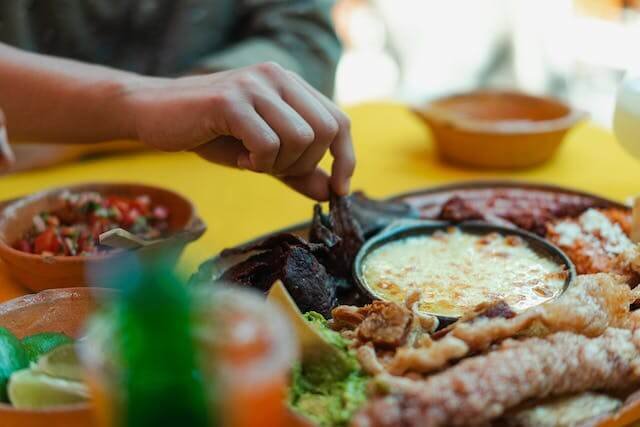
Sourcing Ingredients Locally
While many of these ingredients can be found in local supermarkets, some might require a visit to a specialty Mexican grocery store. If certain ingredients are not available locally, suitable substitutes can often be found. Remember that using fresh, organic ingredients is key to creating the most flavorful and nutritious meals.
But it’s not just about being environmentally conscious – sourcing locally also means using seasonal produce. This allows us to create menus that change with the seasons, utilizing the freshest and most flavorful ingredients
Traditional Cooking Methods
Mexican cuisine employs a variety of cooking methods, including grilling (for dishes like tacos al carbon), baking (for dishes like enchiladas), stewing (for dishes like pozole), and frying (for dishes like chiles rellenos). However, there are also some traditional cooking methods that are unique to Mexican cuisine and give it its distinct flavor.
Firstly, one of the most important traditional cooking methods in Mexican cuisine is nixtamalization. This process involves soaking dried corn kernels in an alkaline solution, usually made from lime or ash. This process softens the corn and also increases its nutritional value by breaking down the tough outer layer of the kernel. Nixtamalization is essential for making masa, a dough used to make tortillas, tamales, and other corn-based dishes.
Another key technique in Mexican cooking is using a comal or griddle to cook tortillas and other flatbreads. The comal is a round, flat pan typically made from clay, cast iron, or steel. It is heated over an open flame and used to cook tortillas until they are lightly charred on both sides. This method gives the tortillas a smoky flavor and soft texture, making them perfect for wrapping around fillings or scooping up salsas.
Another popular cooking method in Mexican cuisine is barbecuing or grilling. This technique involves cooking meat, seafood, vegetables, and even fruits over an open flame or hot coals. The most iconic example of this is carne asada, which refers to grilled marinated beef that is typically served in tacos or burritos. Grilling adds a delicious smoky flavor to dishes and allows for the meats to be cooked quickly while retaining moisture.
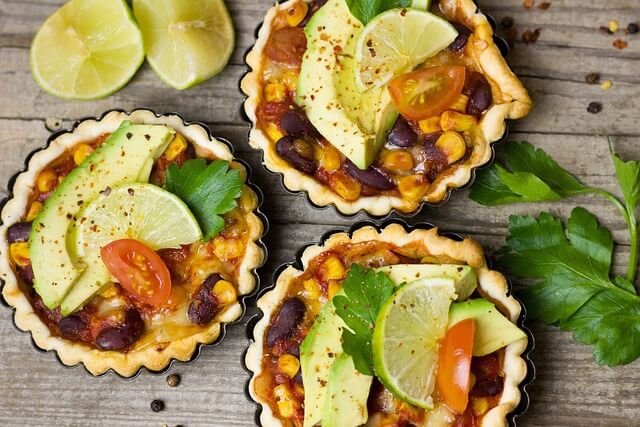
Dominant Flavors of Mexican Cuisine
Mexican cuisine is known for its bold, robust flavors with a balance of spicy, sweet, savory, and tangy elements. The dominant flavors come from the liberal use of spices like cumin, cayenne, and black pepper, as well as fresh herbs, chili peppers, and citrus. These flavors are what give Mexican dishes their distinct and mouth-watering taste.
Spices:
Cumin is a staple in Mexican cuisine, giving dishes a warm, earthy flavor with a hint of smokiness. It is often used in marinades for meats, as well as in sauces and stews. Cayenne pepper adds heat and spice to dishes, while black pepper provides a subtle kick of flavor.
Fresh Herbs:
Cilantro and oregano are two commonly used herbs in Mexican cooking. Cilantro has a unique citrus-like flavor that pairs well with spicy dishes, while oregano lends an aromatic and slightly bitter taste to sauces and marinades.
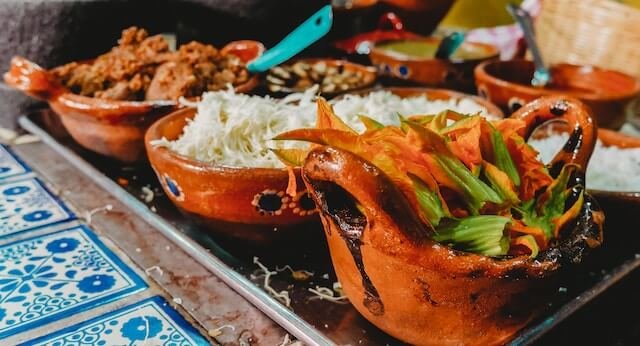
Spice Level Adjustment
While Mexican cuisine can be spicy, the spice level can usually be adjusted to suit your client’s preference by using less of the spicy ingredient or eliminating it altogether. It’s important to remember that not everyone has the same tolerance for spice, so it’s best to ask your client beforehand if they have any specific preferences.
Some common spicy ingredients in Mexican cooking include chili peppers, cayenne pepper, jalapenos, and hot sauce. If your client wants a milder dish, you can use poblano peppers instead of spicier options like habaneros. Another option is to remove the seeds and ribs from peppers before adding them to dishes, as this is where most of the heat lies.
It’s also helpful to offer condiments or toppings that can add heat for those who enjoy spicy food. This allows each person to adjust their own spice level according to their taste. Some popular options include salsa, hot sauce, and jalapeno slices.
When cooking for clients with dietary restrictions, such as gluten-free or vegetarian, it’s important to be mindful of the ingredients used in Mexican dishes. Corn tortillas are a great option for those who are gluten-free, and there are many delicious vegetarian options like veggie fajitas or black bean enchiladas.
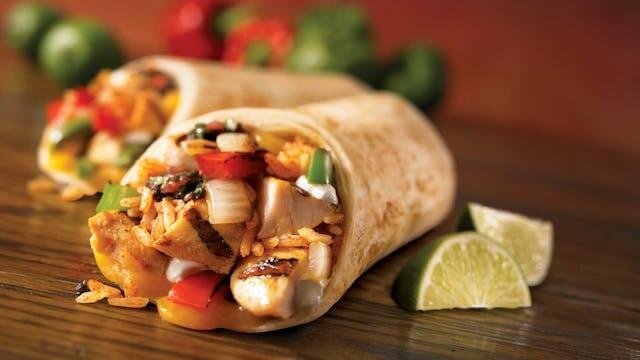
Cultural Significance of Mexican Cuisine
Mexican cuisine has a rich history dating back to ancient times. Meals are often seen as a time for family gatherings and celebrations. Many dishes have a story behind them that reflects the history and culture of Mexico. From the use of indigenous ingredients to the influence of various cultures, Mexican cuisine is a melting pot of flavors and traditions.
Dietary Considerations
When preparing Mexican cuisine, it’s important to consider dietary restrictions. Many Mexican dishes can be adapted to be vegetarian or vegan-friendly, and gluten-free options are also available. Let’s explore some of the dietary considerations to keep in mind when creating your own Mexican-inspired dishes.
Vegetarian and Vegan Options
One of the great things about Mexican cuisine is that it features a variety of plant-based ingredients. Beans, rice, vegetables, and spices are all staples in traditional Mexican cooking. This means that many dishes can easily be adapted to be vegetarian or vegan-friendly. For example, you can substitute beans or tofu for meat in classic dishes like tacos, burritos, or enchiladas. You can also add an extra dose of protein by including quinoa or lentils in your recipes.
Gluten-Free Choices
Corn tortillas are a staple ingredient in Mexican cuisine and are naturally gluten-free. However, flour tortillas and other wheat-based products are also commonly used in Mexican dishes. If you or your guests have a gluten intolerance, be sure to use corn tortillas or seek out gluten-free alternatives for dishes like quesadillas or fajitas.
Fresh Ingredients
When it comes to creating authentic and delicious Mexican dishes, using fresh ingredients is key. Look for locally sourced produce and herbs to incorporate into your recipes. Freshly made salsa with ripe tomatoes, cilantro, and jalapenos will add a burst of flavor to any dish. And don’t forget about avocados – they are not only a staple in guacamole but also make a great addition to tacos, salads, and more.
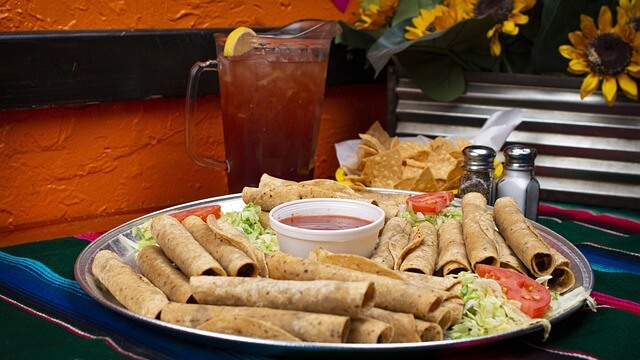
Health Considerations
Mexican cuisine is considered healthy due to its emphasis on fresh fruits and vegetables, whole grains, lean proteins, and heart-healthy fats from avocado. Additionally, traditional Mexican cooking methods such as grilling and steaming help to retain the nutritional value of ingredients.
It’s important to note that not all Mexican dishes are automatically healthy. Some popular Americanized versions may be higher in calories, saturated fat, and sodium due to added oils, cheeses, and sauces. However, by choosing authentic dishes and making some simple tweaks, you can enjoy a nutritious and well-balanced Mexican meal.
Traditional Accompaniments
A traditional Mexican meal often includes a variety of dishes served with tortillas or rice. Desserts often feature tropical fruits, while popular drinks include horchata and tequila-based cocktails.
When it comes to choosing accompaniments for your meal, there are plenty of traditional options to choose from. Here are a few ideas to help you create an authentic Mexican dining experience at home.
1. Salsa and Guacamole
No Mexican meal is complete without salsa and guacamole. These two dips are staples in Mexican cuisine and can be served with tortilla chips as an appetizer or used as toppings for tacos, burritos, or enchiladas. You can make your own fresh salsa by blending together diced tomatoes, onions, jalapenos, cilantro, lime juice, and salt. For guacamole, mash avocados with diced onions, tomatoes, cilantro, lime juice, and salt.
Play around with the ingredients to find your perfect balance of flavors.
2. Refried Beans
Refried beans are a common side dish in Mexican cooking and add a hearty touch to any meal. You can make them from scratch by soaking and cooking pinto beans, then refrying them in oil with onions, garlic, and spices. If you’re short on time, canned refried beans work just as well.
3. Spanish Rice
Another classic accompaniment to Mexican dishes is Spanish rice. This flavorful side dish is made by sautéing rice with tomatoes, onions, garlic, and chicken broth. You can also add some spice by including diced jalapenos or chili powder.
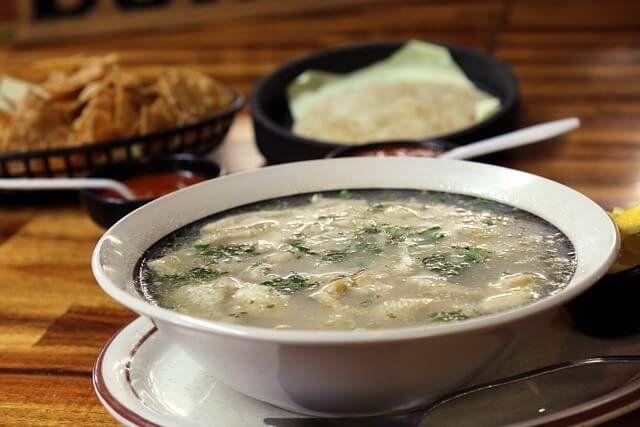
Presentation
In Mexican cuisine, the presentation is colorful and rustic, with an emphasis on the vibrant colors of the fresh ingredients themselves rather than elaborate garnishes. Dishes are often served family-style, encouraging a sense of community and sharing around the table. This connects to our brand voice of warmth and inclusivity, as we believe that food brings people together and creates meaningful connections.
Quality
At The Organic Personal Chef, quality is at the heart of everything we do. We source only the freshest organic ingredients from local farmers and prioritize using sustainable practices in our cooking. Our commitment to quality ensures that every dish is not only delicious but also nourishing for both the body and the environment.
Variety
We understand that everyone has different tastes and dietary needs, which is why variety is an important aspect of our brand voice. From classic Mexican dishes like tacos and enchiladas to vegetarian or gluten-free options, we strive to offer a diverse range of menu items that cater to different preferences and dietary restrictions.
Community
Food has the power to bring people together and create a sense of community. This is why we place great emphasis on fostering meaningful connections through our meals. Whether it’s cooking for a family gathering or hosting a dinner party with friends, we believe in the importance of sharing good food with good company.
Personalization
As professional chefs, we understand that every individual has unique tastes and preferences when it comes to food. That’s why we offer personalized meal planning services where we work closely with our clients to create customized menus tailored to their specific needs and preferences. Our brand voice of personalization ensures that every client feels seen, heard, and satisfied with their meals.

Common Variations
Mexico’s diverse regions each have their unique flavors and dishes. For example, the region of Oaxaca is known for its mole sauces, while Yucatan is famous for its Mayan-influenced dishes. In addition, Mexican cuisine has been heavily influenced by Spanish and indigenous cultures. This mixture of influences has created a wide variety of dishes and flavors that make Mexican food so vibrant and delicious.
Authenticity is key when it comes to preparing traditional Mexican meals. Using fresh and locally sourced ingredients is essential in capturing the true essence of these dishes. The Organic Personal Chef understands this importance and strives to use only the freshest, organic ingredients in every meal.
Preparation and Equipment
Some Mexican dishes may require specific equipment, like a comal for making tortillas or a molcajete for grinding spices. Certain elements of a dish, like marinated meats or soaked beans, may need to be prepared ahead of time. Being prepared with the right tools and ingredients is essential for creating authentic Mexican cuisine.
Cooking Techniques
Mexican cooking techniques are rooted in tradition and can vary depending on the region or dish being prepared. Some common techniques include:
– Frying (frito): used for dishes like chiles rellenos, where ingredients are coated in batter and deep-fried.
– Boiling (hervir): commonly used for meats, vegetables, and beans.
– Grilling (asado): popular for meats and vegetables, often seasoned with traditional spices like adobo or achiote.
– Steaming (cocer al vapor): used for tamales, often wrapped in corn husks or banana leaves.
– Roasting (asar): typically done in a traditional clay or brick oven, this method is used for meats and vegetables.
– Braising (guisar): slow-cooking method often used for stews like pozole or birria.
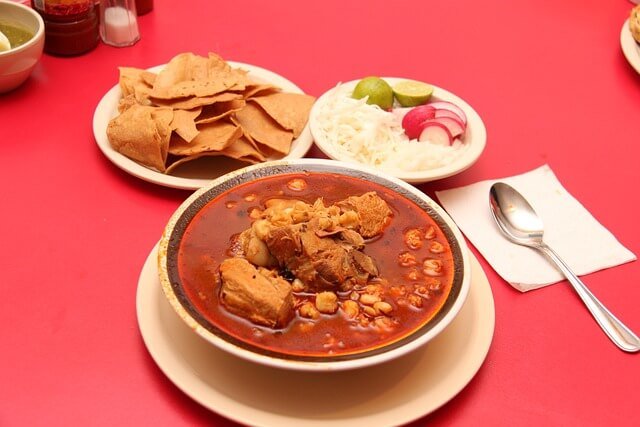
Molcajete (Mortar and Pestle): This traditional Mexican tool, usually made of volcanic rock or granite, is used for grinding spices, herbs, and making salsas and guacamole.
Tortilla Press: A must-have for any Mexican cuisine enthusiast, this tool is used to make fresh, homemade tortillas.
Comal (Griddle): An essential flat cooking surface, typically used for heating tortillas, toasting spices, and roasting vegetables.
Tamale Steamer: A large pot with a steamer insert, designed specifically for making tamales, a classic Mexican dish.
Pots and Pans: A variety of sizes are needed for different dishes. Deep pots for soups and stews like pozole, smaller saucepans for simmering sauces, and frying pans for sautéing ingredients.
Cast Iron Skillet: Perfect for searing meats and vegetables, and can also be used for making traditional dishes like chiles rellenos.
Chile Roaster: Used to evenly roast fresh chilies, which are a staple in Mexican cuisine.
Citrus Juicer: A handy tool for extracting juice from limes and oranges, commonly used in marinades and salsas.
Knife Set: A good set of sharp knives is essential for chopping, slicing, and dicing a variety of ingredients.
Measuring Cups and Spoons: Accurate measurements are crucial in cooking, especially for recipes that require precise amounts of spices.
Mixing Bowls: Needed for combining ingredients, marinating meats, or mixing dough.
Remember, the quality of your tools can significantly influence your cooking experience and the outcome of your dishes. So, invest wisely and keep them well-maintained for the best results.
Wondering what tools a personal chef might need? I’ve written an extensive article for you – A Comprehensive List Of Must-Have Tools and Essential Items for the Personal Chef
Personalizing Mexican Cuisine
Personalizing Mexican dishes while maintaining authenticity can be achieved by adjusting flavors to suit personal preferences, substituting ingredients based on dietary needs, or presenting dishes in creative ways.
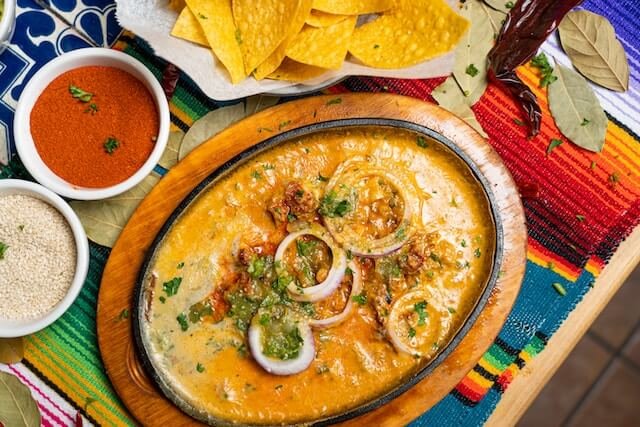
Mexican Food For Personal Chefs
Exploring and cooking Mexican cuisine offers an exciting culinary journey. By understanding its key ingredients, techniques, and cultural significance, we can bring the authentic taste of Mexico to our clients’ dining tables.
Here are some of my favorite tools for providing my personal chef service
As an experienced personal chef, I’ve found that the secret to creating mouthwatering dishes goes beyond just having a passion for food. It’s also about using the right kitchen tools. Today, I’m going to share with you my must-have kitchen items that help me bring my culinary creations to life.
1. Chef’s Knife
The first item on my list is a high-quality chef’s knife. It’s the most versatile tool in my kitchen, perfect for chopping, slicing, and dicing. My preference is for a Global Chef’s Knife, known for the edge and the way they are balanced.
2. Cast Iron Skillet
Next up is a good old cast-iron skillet. From searing steaks to baking cornbread, this pan does it all. I love the Lodge Cast Iron Skillet, which retains heat beautifully and adds a nice crust to anything you cook.
3. Stainless Steel Pots and Pans
A set of stainless steel pots and pans is essential for a variety of cooking techniques. They’re great for simmering, boiling, and sautéing. All-Clad’s Stainless Steel Cookware Set is my go-to choice for its exceptional performance and durability.
4. Immersion Blender
An immersion blender makes pureeing soups, making smoothies, and blending sauces a breeze. I suggest the Braun Multiquick Hand Blender, which is powerful, easy-to-clean, and highly versatile.
5. Digital Thermometer
To ensure perfectly cooked meats every time, a digital thermometer is a must. The ThermoPro TP19 Waterproof Digital Meat Thermometer provides speedy and accurate readings, ensuring your roast chicken or prime rib is cooked to perfection.
6. Silicone Spatula
A silicone spatula is a chef’s best friend for its versatility. It’s heat-resistant, non-stick, and perfect for everything from folding batter to stirring sauces. I recommend the OXO Good Grips Silicone Spatula.
7. Stand Mixer
Lastly, for avid bakers, a stand mixer is a game-changer. The KitchenAid Artisan Series 5-Qt. Stand Mixer isn’t just a pretty face; it makes mixing doughs and batters effortless.
These are the tools that I use daily in my personal chef service. Remember, quality tools make a difference, but they don’t have to break the bank. Start with the basics and add on as you grow more comfortable and adventurous in the kitchen.
Happy cooking!

